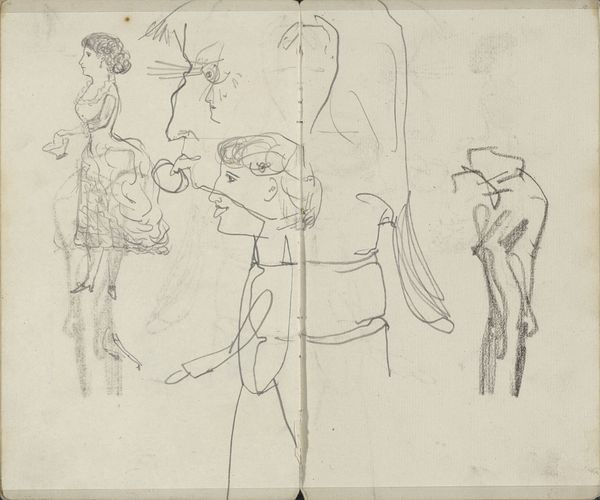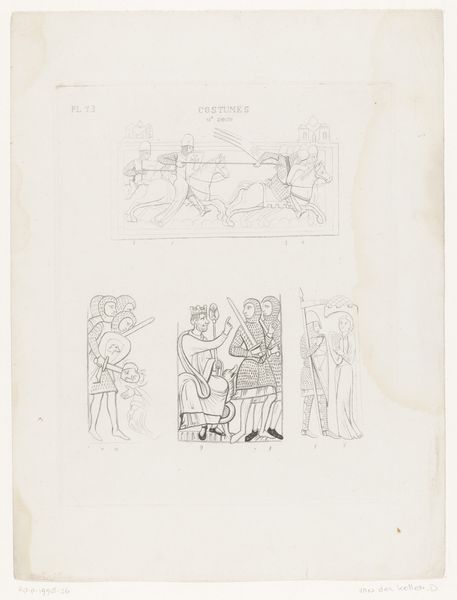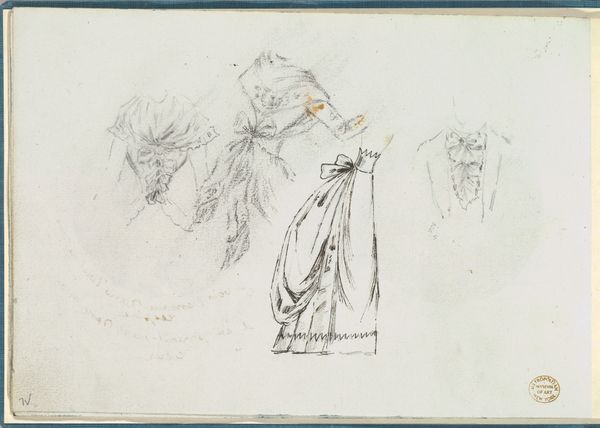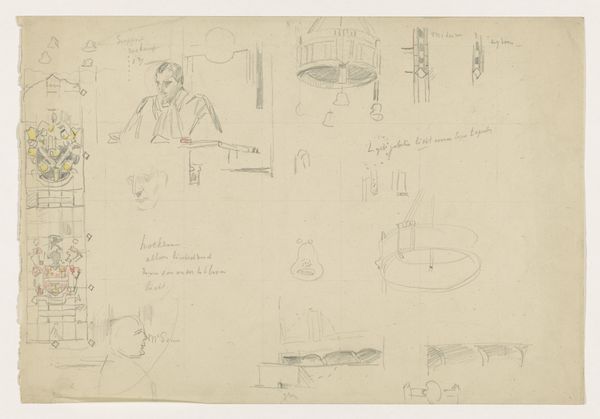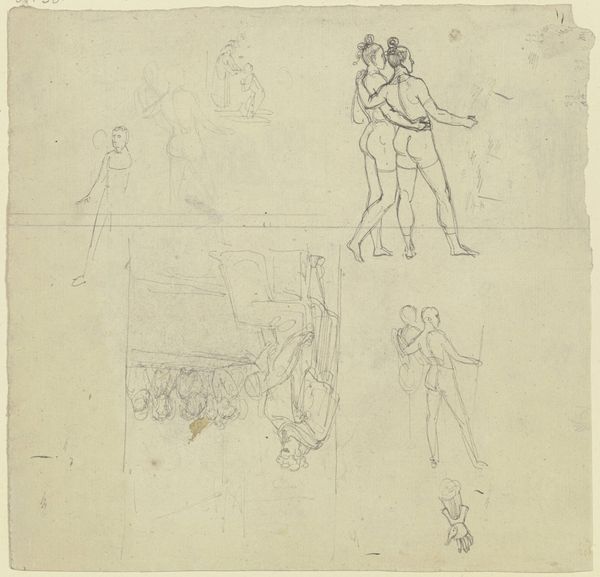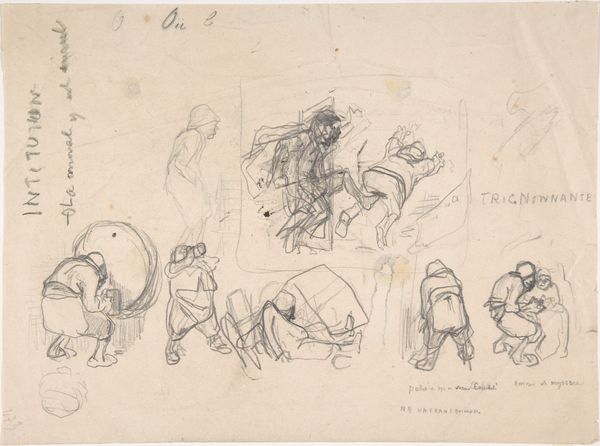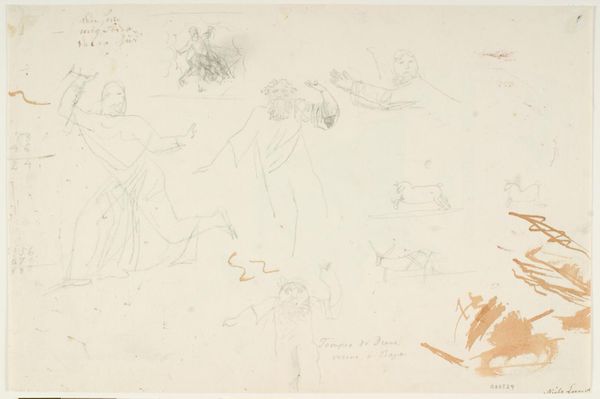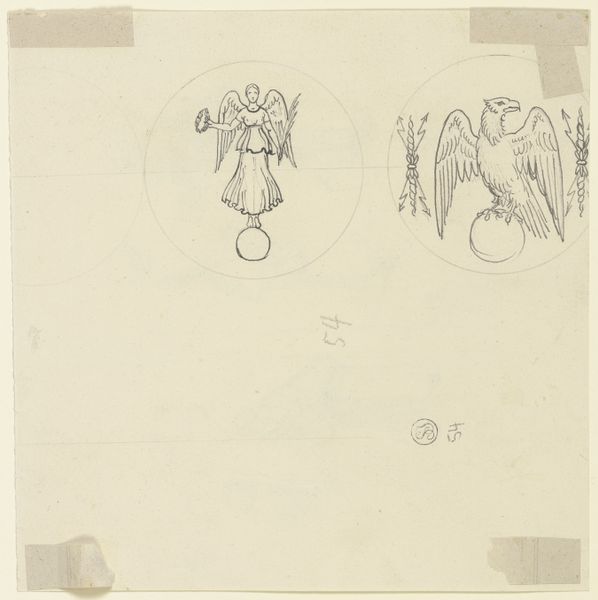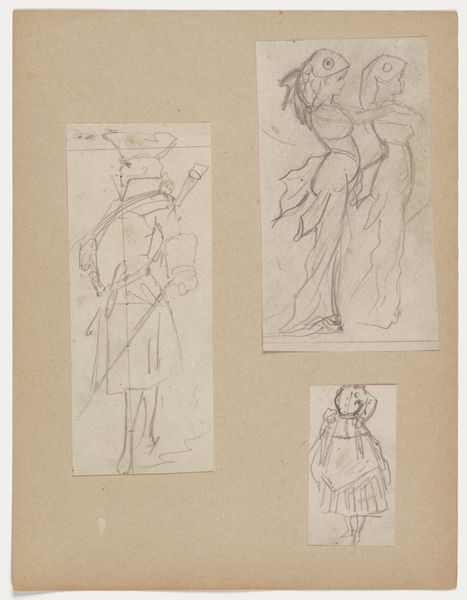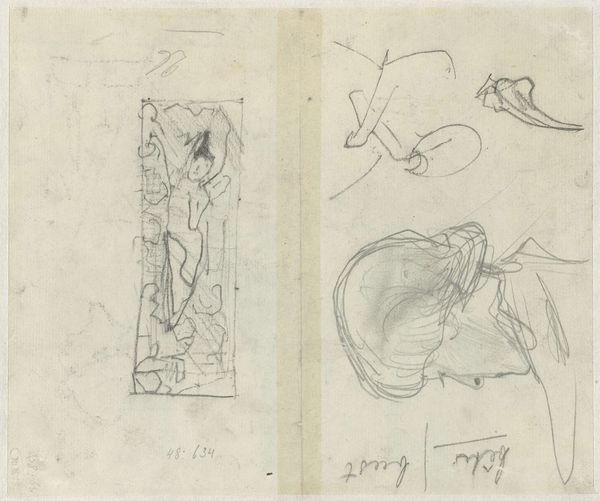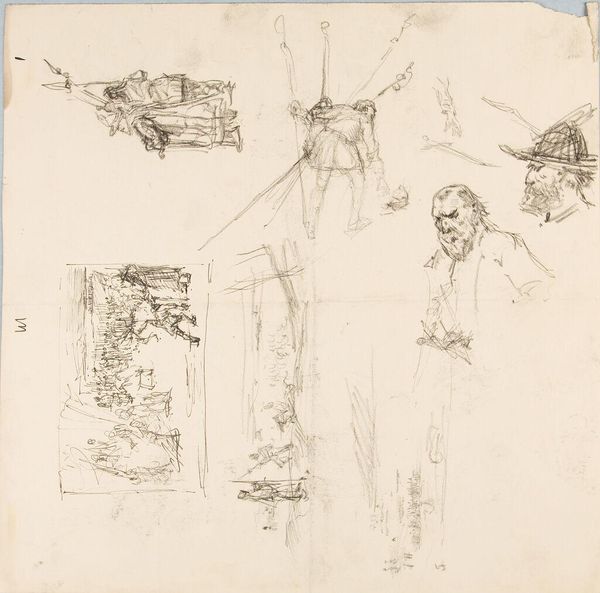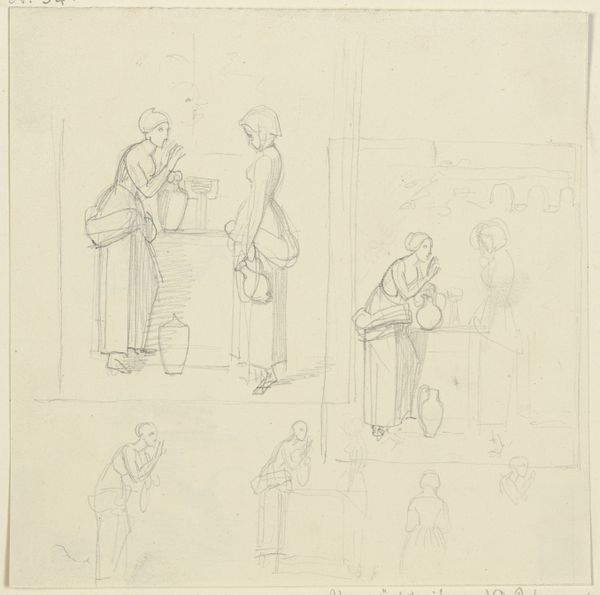
Studies of Caricatures in Different Poses 19th-20th century
0:00
0:00
Copyright: CC0 1.0
Curator: Here we have "Studies of Caricatures in Different Poses," by William Valentine Schevill, housed here at the Harvard Art Museums. It's a collection of pencil sketches. Editor: My first thought is that there's a real sense of unease here. The figures are distorted, and the sketchy quality adds to that unsettling feeling. Curator: Right. The distortion serves a specific purpose. Caricatures have a long history in political satire, often used to critique figures of power through exaggerated features and situations. Editor: I see that. There's a figure bursting through what appears to be a door, almost reminiscent of a jack-in-the-box. Perhaps a symbol of disruption, of unwelcome truths emerging? Curator: Precisely. Consider how this type of imagery, while seemingly playful, can carry significant weight in shaping public opinion and challenging established norms. Editor: Looking at the clown-like figure, I'm reminded of the tragicomic nature of human existence. These caricatures capture the absurdity we often try to mask. I find the symbols within these drawings very interesting. Curator: Indeed, it's a potent reminder that art, even in its simplest form, can be a powerful tool for social commentary. Editor: It's fascinating how these sketches can evoke such a range of emotions and interpretations.
Comments
No comments
Be the first to comment and join the conversation on the ultimate creative platform.
